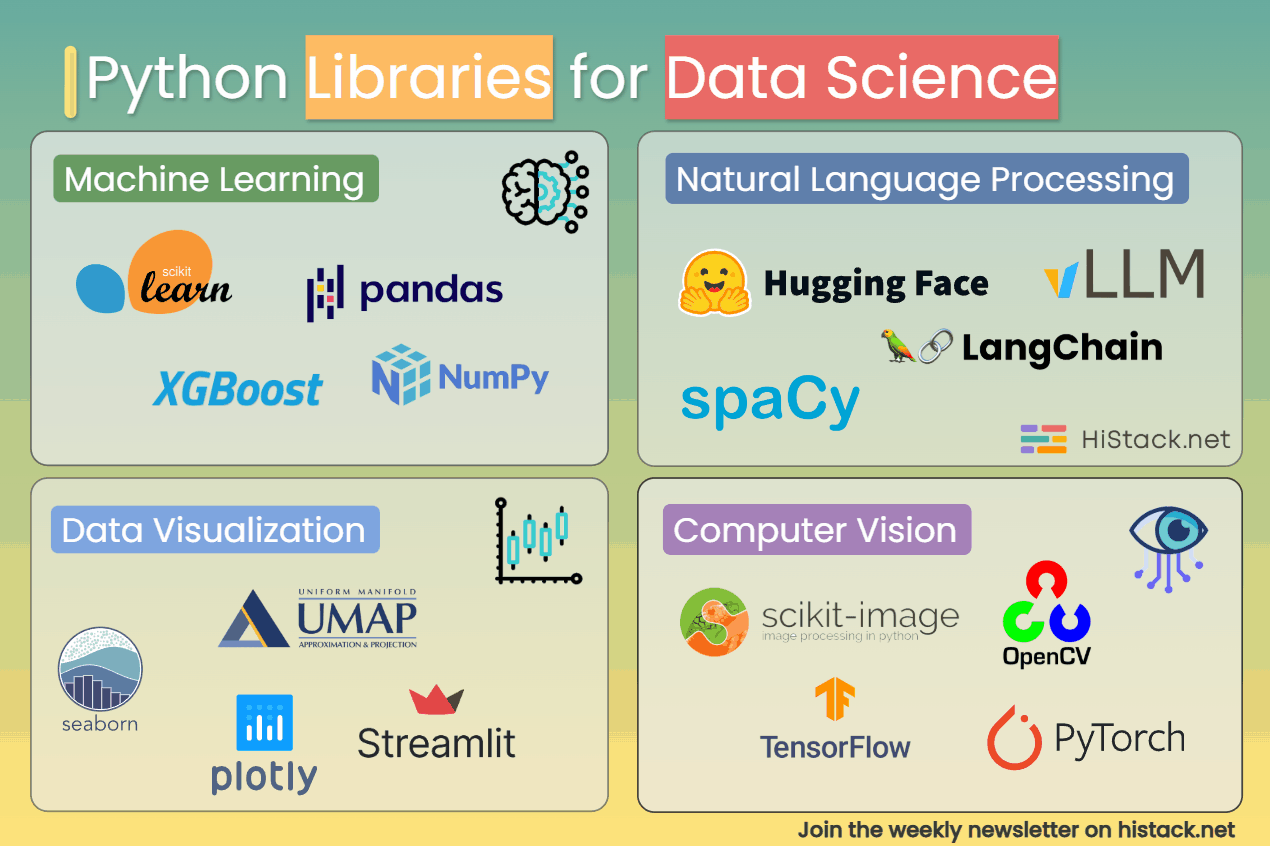If you're looking to start your journey in data science, one of the first questions you might ask is: What tools should I use? Python is the go-to language for data science, and it offers a powerful ecosystem of libraries to help you get started.

We will break down the key Python libraries you need to know where to start your data science journey. Whether you're working on machine learning, data visualization, natural language processing, or computer vision, these libraries will set you on the right path.
Getting Started with Data Science in Python
Before diving into coding, it's important to understand the fundamental steps of data science:
Data Collection & Preparation – Cleaning and structuring data for analysis.
Exploratory Data Analysis (EDA) – Understanding patterns and trends.
Machine Learning & AI – Building predictive models.
Data Visualization – Communicating insights through charts and graphs.
Deployment – Integrating models into real-world applications.
To tackle these steps, let’s look at the essential Python libraries you need to start your data science journey.
Best Python Libraries for Data Science
1. Machine Learning Libraries
Machine learning is a key part of data science, and these libraries will help you build models efficiently:
Scikit-learn – A beginner-friendly library for traditional machine learning models like regression, classification, and clustering.
Pandas – The best tool for data manipulation and analysis, helping you structure datasets for machine learning.
NumPy – Provides numerical computing power, essential for handling large datasets.
XGBoost – A high-performance library for building powerful predictive models using gradient boosting.
2. Data Visualization Libraries
Data visualization helps you understand and present data insights clearly:
Seaborn – Great for statistical data visualization, making charts visually appealing.
Plotly – Enables interactive and dynamic visualizations for dashboards.
Streamlit – Helps build interactive web applications for data science projects.
UMAP – Primarily used for dimensionality reduction but also useful for visualizing high-dimensional data.
3. Natural Language Processing (NLP) Libraries
If you're working with text data, these libraries will help you analyze and process it efficiently:
Hugging Face Transformers – The best library for working with pre-trained language models like BERT and GPT.
spaCy – A fast and efficient NLP library for tokenization and entity recognition.
LangChain – Ideal for building applications that interact with large language models (LLMs).
vLLM – Optimized for running LLMs efficiently, improving performance.
4. Computer Vision Libraries
For those interested in image processing and deep learning, these libraries are essential:
OpenCV – The most popular library for image processing and real-time computer vision.
Scikit-Image – A specialized tool for advanced image processing within the SciPy ecosystem.
TensorFlow & PyTorch – Two leading deep learning frameworks for training AI models.
How to start learning Data Science?
If you're new to data science, follow these steps to get started:
Learn Python Basics – Get comfortable with Python syntax and basic programming concepts.
Master Pandas and NumPy – These two libraries are the foundation of data analysis.
Practice with Real Data – Use Kaggle datasets or your own data for hands-on projects.
Understand Machine Learning – Start with Scikit-learn to build simple models.
Work on Visualization – Learn Seaborn and Plotly to present your insights effectively.
Explore NLP or Computer Vision – Depending on your interest, try Hugging Face for text or OpenCV for images.



